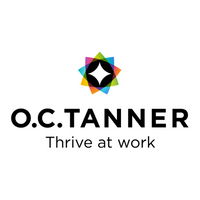Five inspiring ways to achieve recognition and engagement through a reward programme

1. Don’t seek to ‘drive’ engagement with the recognition programme. You can’t force people to engage, it’s up to every individual whether they wish to or not. Instead, provide recognition training to ensure people understand why recognition is so important and how to appreciate effectively. Then provide the recognition tools, grant the permission and step out of the way.
2. Champion peer-to-peer recognition as this produces far more powerful results than just ‘top down’ recognition giving. Of course, this requires leaders to demonstrate humility and to empower and trust employees to recognise the right behaviours and ‘call out’ colleagues’ achievements.
3. It’s also important to make recognition public to continuously reaffirm what ‘great work’ looks like and to be clear which behaviours are in keeping with the company’s values. The observation of recognition should never be underestimated. True social recognition occurs when employees frequently give, receive and observe recognition. The impact of true social recognition includes more employees engaging with the organisation, proactively innovating and staying with their companies for longer.
4. To encourage as many employees as possible to ‘buy into’ a recognition programme requires tools and technologies that support recognition giving at any time and from anywhere, in the normal flow of work. Employees need to be able to effortlessly recognise a colleague on the other side of the world, as part of their daily flow of work and from their mobile devices, as well as their computers/laptops. Only when recognition giving overcomes the obstacles of time and geography, will the appreciation culture the organisation is cultivating be truly realised.
5. Finally, find meaningful metrics that allow the ongoing review of the recognition strategy. After all, it needs to deliver real results. These metrics may include engagement scores, customer feedback or idea generation, for example. Whatever they are, measure them and evaluate the results in line with the company’s recognition programme to help leaders to understand what success looks like.
Far more than a ‘nice thing to do’, an effective culture of appreciation and recognition can attract and retain the very best talent and provide high levels of engagement. But it MUST be done right – paying lip service to recognition can be worse than ignoring recognition all together. It’s only those companies that take the time to develop a recognition programme that employees are keen to connect with that will reap the rewards.
The author is Robert Ordever, MD of O.C. Tanner Europe.
This article is provided by O.C. Tanner Europe.
Supplied by REBA Associate Member, O. C. Tanner
Giving teams the integrated tools they need when, where and how they need them.







